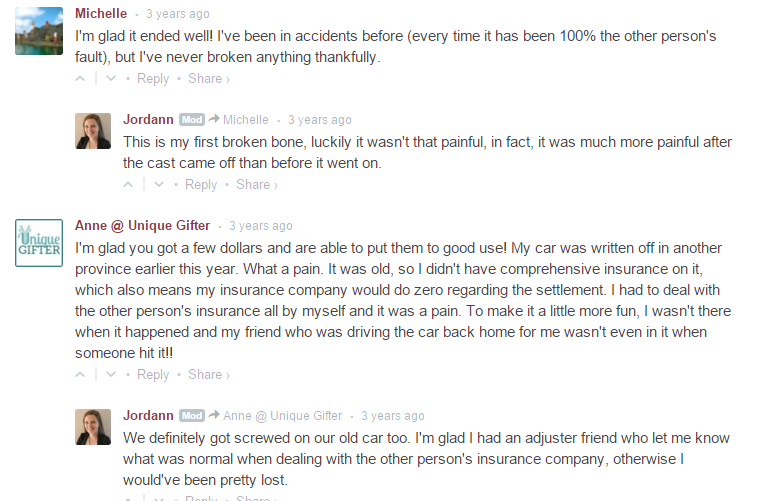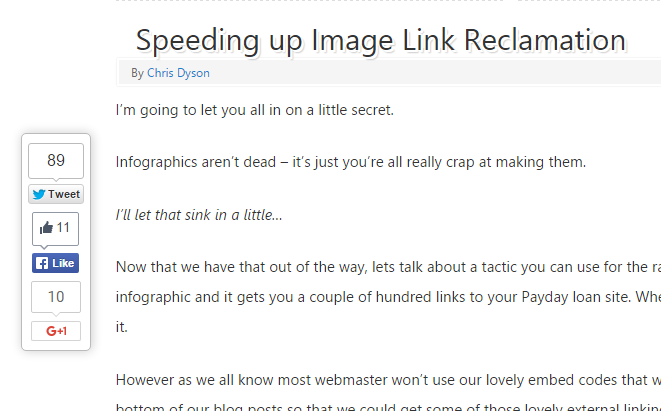by Venchito Tampon Jr | Last Updated on October 24, 2021
Link research is perhaps the most critical phase in link building as this is where your initial link building efforts will come into play.
Building a long list of link opportunities requires the use of search engines, link prospecting tools (e.g. Ahrefs/OSE) and creative mind – as you have to think outside of the box in order to pop up new link research methods that are more effective than your previous ones.

This post is my presentation from last week’s MORCON (Master Online Rankings Conference) at Pampanga, Philippines, where different agency marketers, SEOs and managers had gathered to learn basic and advance strategies and tips on link acquisition, SEO and PPC.
Let’s get straight to the technical part of this post.
Advanced Search Operators
If you’re an advanced link builder, you are already familiar with common search operators (inurl and intitle) that filter page search results based on pages’ URLs and meta titles. This helps you prospect for pages closely related to your keyword and/or to content you’re likely to recommend to industry bloggers.
You may want to check out this guide on Google search operators, if you’re newbie in the industry.
These search operators (inurl and intitle) are commonly used in blogger outreach and resource page link building approaches.
But there are two search operators you may haven’t use for your link targeting campaigns or at least heard/read on other SEO and link building blogs.
Inanchor and tilde
Let me explain inanchor search operator first.
This search operator returns pages that have your target keyword as the anchor text.
In our internal research, we’ve found out that using inanchor search query may give a higher number of relevant pages than a simple inurl search query.
Here are some tactics where the inanchor search operator is highly useful.
Content contribution using inanchor
Finding niche blogs to target for content contribution is easy if you’re just working on a few campaigns but scaling it to around 10 or 15 or even more requires additional and effective link prospecting methods. That’s where inanchor search comes in.
Adding inanchor search operator to your current search phrases (write for us, become a contributor, submit a post, etc..) would help you gather new blog opportunities that aren’t discovered through inurl queries.
Ready to outreach opportunities
Response rate doesn’t only rely on how convincing your outreach templates and what details have you personalized for each specific link target, but in many cases, it depends on how ready the blogger/webmaster to respond to your pitch.
Inanchor search operator plus “contact me” allows you to find bloggers with high intent to respond to pitches. If you’re looking for quick blog prospecting, (e.g. 50 niche blogs in less than an hour), then maximizing the inanchor search is a good choice.
inanchor and inurl combination
Combining inanchor with other search operators gives you relevant link opportunities. For instance, you can use both inanchor and inurl search operators in one search phrase (see the image below).
Inanchor:”start your own blog” inurl links OR inurl:resources returns niche-specific resource pages with the blogging anchor text.
Link sourcing
If you plainly search for a target keyword/phrase with the inanchor search operator, you won’t get exact link prospects from the search results, but it would reveal new links pages of your competitors – which you can somehow consider for competitive link research analysis.
Head over to your favorite link building tool and look for pages/sites that are linked to resource pages of your competitors. Identify some footprints in URLs to initiate more link research phrases (useful-wordpress-links.html can turn to inurl:useful-wordpress-links.html).
inanchor and minus site combination
If you’re looking to build high quality links to your branded pages (about me/us, our team, press page, etc..) from interview and roundup pages, then getting straight to mining those opportunities is a good place to start.
Use inanchor search operator to find branded linking pages (best if you can indicate the name of the industry influencer to populate more search pages). Make sure you add a minus site search operator to remove pages of the influencer’s website from the search results.
Tilde
Tilde is a search operator used to find synonyms of a particular keyword.
Tilde (~) and Minus ( – ) Search Operator
Combining tilde with minus search operator can pop up new pages targeting synonyms of a keyword, but doesn’t have the exact target keyword. But with our internal research, using this search operators combination would give you the opposite – Google will still reveal pages that include the keyword even if you use the minus search operator.
Even if that’s the case, I’ve found out that tilde search brings pages that are laterally related to your niche.
A tilde search operator for blogging phrase would reveal sites/pages about web writing, communication and wordpress.
Resource inclusion for general bloggers
Tapping into other niches aside from your main industry is critical since you don’t want to go too far away from the root theme of your brand.
However, there are products or tools that could be targeted to general bloggers of almost every numbered industry.
If you own a WordPress plugin, theme or hosting, then it is likely to be included in the recommended resources of travel, fashion, health, beauty and entrepreneur blogs.
You can use the search query, [recommended resources for NICHE bloggers ~guide] to find this type of links pages. Change the niche with the industry of your choice, and you’ll mine new link opportunities for your website.
Pro tip: If you have an affiliate program, then prioritize in outreach resource pages that have external affiliate links.
Tools
Tools speed up the process at some point, particularly when doing link research campaigns. They would help you to filter link opportunities based on set metrics as well as bring undiscovered link targets.
Here are two link prospecting tools you may want to check out for future research: Linkminer and Brandmentions.
This link building tool is mainly used for broken link building, its features are catered to resource pages, such as:
- Finding broken links (404s) on specific pages
- Seeing the number of external and internal links right on the search results (which minimizes the time you spend landing on pages with low linking potential). Pages with low to zero external links indicate that webmasters won’t consider linking to other references or resources.
If you want to effectively use Linkminer, you can check out this link building tutorial on PointblankSEO.
Mentions on the web, whether they are on forums, social or blogs, are proofs of your site’s branding, especially if they are actually earned.
Looking for those sites/blogs who recently mentioned your content (unlinked or linked) does help in analyzing the status level of your brand. Being top of the game means that you need to see which of your competitors are producing quality content (audience-targeted) and to identify new platforms where their content pieces are promoted.
Some cool benefits of using Brandmentions:
- Allows you to spot influencers using the topical mentions research, which helps your content ideation process run smoothly, as you are able to target the content to these influencers – which increases the shareability of your page.
- Notifies you of any mentions of your brand, staff member or page that you can leverage for relationship building – simply sending “thank you” messages to those who mentioned you makes a lot difference than pitching cold emails.
- Helps you compare the number of web and social mentions between your brand and your competitors.
https://blog.kissmetrics.com/influencer-outreach-in-content-marketing/
Metrics
Setting standards for your link development campaign helps you not only in filtering out low quality domains from your list but most importantly, in providing real value to your website or to your clients’ sites.
We’re not using domain authority as our sole metric.
Let’s talk about some of the metrics that aren’t being used by link building firms today.
Engagement
What engagement does is that it validates the readership of a particular blog/site. The more engagement it receives (i.e. number of comments per post), the higher is the number of readers for each post (99% this is true).
When looking for blogs, try to set a benchmark for engagement. For instance, you would only want to consider blogs that have the average of 5 comments per post. This will help you ensure that you’ll absorb additional readers from the blog once you acquired a link from it (for newly contributed content).
Social Shares
Numbers don’t lie. The same is true with social shares.
Using social shares as one of your base metrics give you the assurance that there is a community ready to read your content, once it has been published on other blogs.
This also amplifies links to your content, as you can build additional links from bloggers who would have read your content or see your link and cite you as one of their references from their own blogs.
SEMRush Traffic
With Penguin 4.2 coming up at the end of this year, content creators and link developers should set organic traffic and link analysis as quality metrics/factors when performing link prospecting.
http://www.semrush.com/info/seedebtrun.com
SEMRush is a great tool of analyzing whether the site has been penalized in its recent years by simply looking at the organic traffic data (blue lines). Recovery that exceeds its latest drop should be considered, but those that have a steady downfall won’t be a good choice to add to your list.
One bonus tip… Create your own checklist
One of the agency hacks that will certainly develop your overall link building campaigns, which we’ve been using internally in our link building team is the use of checklist.
A checklist for every campaign removes inefficiencies in link research as well as it guarantees quality links in your lists. This is definitely you have to try for your company. Let me know in the comments if this works for you.
The Author
Venchito Tampon Jr
Venchito Tampon is a Filipino Motivational Speaker, Corporate Trainer, and a Leadership Speaker in the Philippines. He is the CEO and Co-Founder of SharpRocket, a link building agency. With a decade of experience, Venchito has a proven track record of leading hundreds of successful SEO (link builidng) campaigns across competitive industries like finance, B2B, legal, and SaaS. His expert advice as a link building expert has been featured in renowned publications such as Semrush, Ahrefs, Huffington Post and Forbes. He is also an international SEO spoken and has delivered talks in SEO Zraz, Asia Pacific Affiliate Summit in Singapore, and Search Marketing Summit in Sydney, Australia. Check out his other businesses, Hills & Valleys Cafe, Blend N Sips and Saas Pursuit.
How our LINK BUILDING AGENCY builds 250 links/mo consistently using Predictable Link Building Methodology™…
- Using a SIMPLE and PROVEN system
- Using a SCALABLE strategy
- No private blog networks
- No creepy outreach emails














